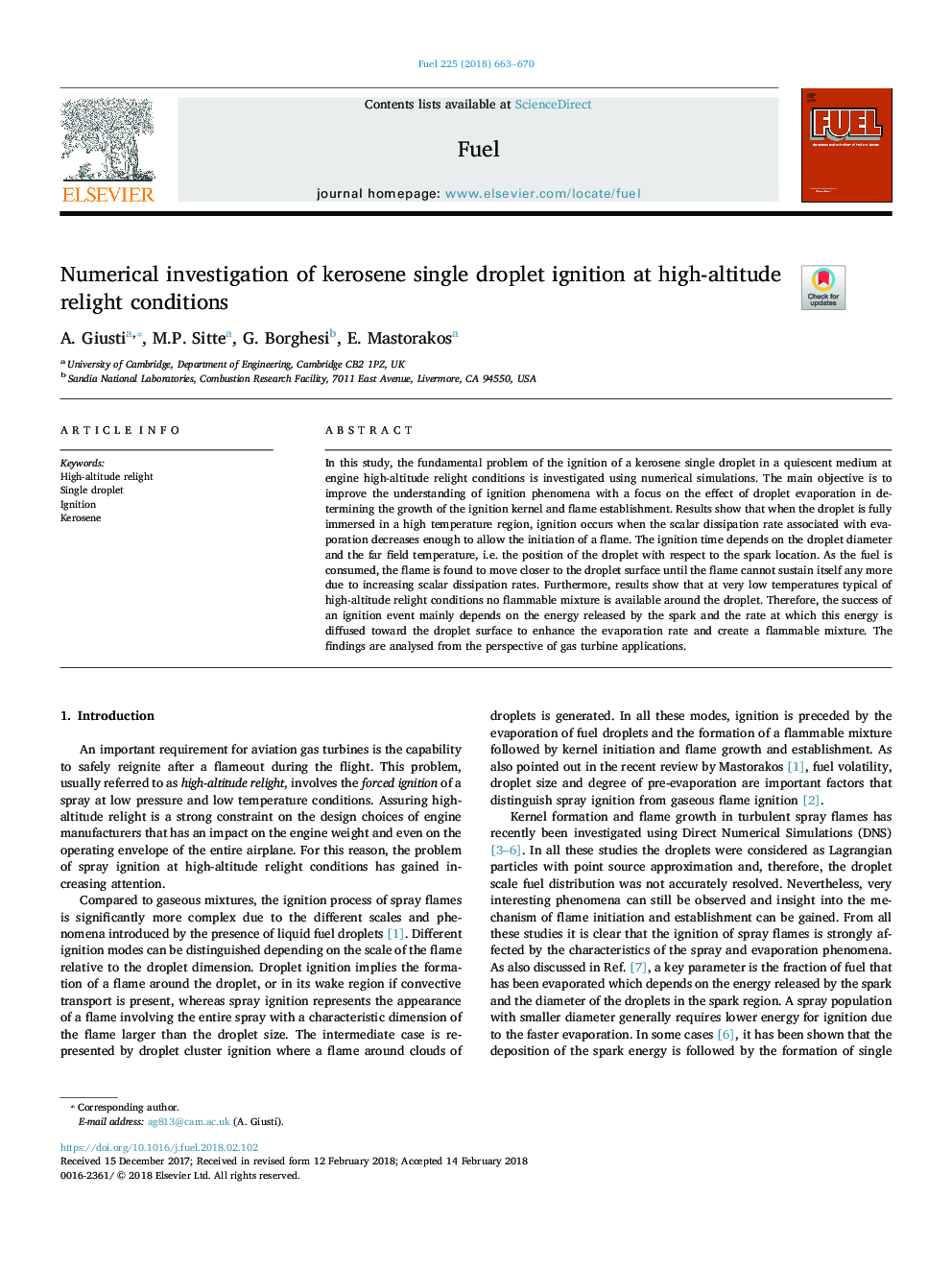| کد مقاله | کد نشریه | سال انتشار | مقاله انگلیسی | نسخه تمام متن |
|---|---|---|---|---|
| 6631085 | 1424939 | 2018 | 8 صفحه PDF | دانلود رایگان |
عنوان انگلیسی مقاله ISI
Numerical investigation of kerosene single droplet ignition at high-altitude relight conditions
ترجمه فارسی عنوان
بررسی عددی جرقه ی یک قطره ی نفت سفید در شرایط یخ زدگی بالا
دانلود مقاله + سفارش ترجمه
دانلود مقاله ISI انگلیسی
رایگان برای ایرانیان
کلمات کلیدی
ارتفاع بالا، قطره تک آتش گرفتن، نفت سفید
ترجمه چکیده
در این مطالعه، مسئله بنیادی احتراق یک قطره ای نفت سفید در یک محیط خالی در شرایط دنده بالا در ارتفاع موتور با استفاده از شبیه سازی های عددی مورد بررسی قرار گرفته است. هدف اصلی بهبود فهم پدیده های احتراق با تمرکز بر اثر تبخیر قطره در تعیین رشد هسته احتراق و ایجاد شعله است. نتایج نشان می دهد که هنگامی که قطره در یک منطقه با درجه حرارت بالا کاملا غوطه ور می شود، احتراق اتفاق می افتد زمانی که سرعت تخلیه اسکالر در ارتباط با تبخیر به اندازه کافی برای شروع شعله کاهش می یابد. زمان احتراق بستگی به قطر قطره و دمای زمین دور دارد، به عنوان مثال موقعیت قطره نسبت به محل جرقه. همانطور که سوخت مصرف می شود، شعله به سمت سطح قطره نزدیک می شود تا زمانی که شعله دیگر نمی تواند به دلیل افزایش میزان تخریب اسکالر افزایش یابد. علاوه بر این، نتایج نشان می دهد که در دماهای بسیار پایین معمولی برای شرایط مقاوم در ارتفاع زیاد هیچ مخلوط قابل اشتعال در اطراف قطره وجود ندارد. بنابراین، موفقیت یک رویداد اشتعال به طور عمده به انرژی آزاد شده توسط جرقه و میزان که در آن این انرژی به سمت سطح قطره منتشر شده برای افزایش نرخ تبخیر و ایجاد یک مخلوط قابل اشتعال بستگی دارد. یافته ها از منظر کاربردهای توربین گاز مورد بررسی قرار گرفته است.
موضوعات مرتبط
مهندسی و علوم پایه
مهندسی شیمی
مهندسی شیمی (عمومی)
چکیده انگلیسی
In this study, the fundamental problem of the ignition of a kerosene single droplet in a quiescent medium at engine high-altitude relight conditions is investigated using numerical simulations. The main objective is to improve the understanding of ignition phenomena with a focus on the effect of droplet evaporation in determining the growth of the ignition kernel and flame establishment. Results show that when the droplet is fully immersed in a high temperature region, ignition occurs when the scalar dissipation rate associated with evaporation decreases enough to allow the initiation of a flame. The ignition time depends on the droplet diameter and the far field temperature, i.e. the position of the droplet with respect to the spark location. As the fuel is consumed, the flame is found to move closer to the droplet surface until the flame cannot sustain itself any more due to increasing scalar dissipation rates. Furthermore, results show that at very low temperatures typical of high-altitude relight conditions no flammable mixture is available around the droplet. Therefore, the success of an ignition event mainly depends on the energy released by the spark and the rate at which this energy is diffused toward the droplet surface to enhance the evaporation rate and create a flammable mixture. The findings are analysed from the perspective of gas turbine applications.
ناشر
Database: Elsevier - ScienceDirect (ساینس دایرکت)
Journal: Fuel - Volume 225, 1 August 2018, Pages 663-670
Journal: Fuel - Volume 225, 1 August 2018, Pages 663-670
نویسندگان
A. Giusti, M.P. Sitte, G. Borghesi, E. Mastorakos,
